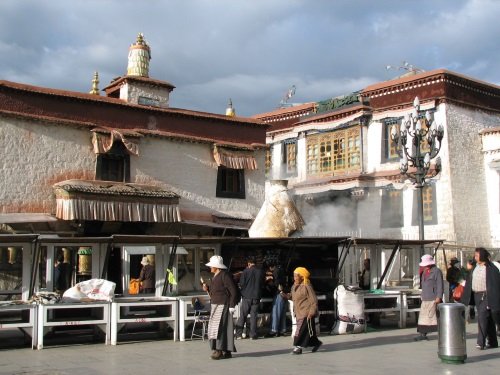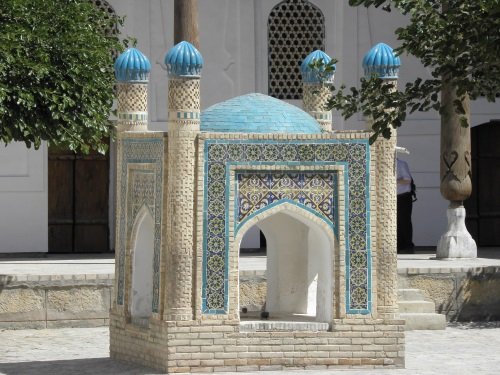Els Slots
A Silk Roads overdose?
According to this Thematic Study from 2014, the WH List contains 35 sites related to the Silk Roads / Routes. We had 27 already in the Silk Roads Connection , but with Bam, Lhasa, Mount Qingcheng, Bisotun, Soltaniyeh, Esfahan, Shustar, Takht-e-Soleyman, Armenian monasteries of Iran, Hatra, Samarra, Bosra, Anjar, Baalbek, Kathmandu, Makli (Thatta), Divrigi, Nisa and Itchan Kala 21 others could be labelled that way. And there is no end to Silk Roads nominations: the tentative lists of Kazakhstan, Kyrgyzstan, Tajikistan, Uzbekistan, India, Turkmenistan, China and Iran all contain explicit serial Silk Roads sites.

The Thematic Study found no less than 54 ‘Corridors’ within the Silk Roads system, linking ‘nodal’ points along the routes such as cities and towns. Nominations of these separate Corridors are now slowly brought forward. There is one already Pending : in 2014, the 'Silk Roads Penjikent-Samarkand-Poykent Corridor' (Tajikistan – Uzbekistan) got referred. In addition to the already inscribed Samarkand and Bukhara, this 365km long stretch would include places like Chor Bakr, Penjikent, Raboti Malik Caravanserai, Vobkent Minaret and the Bahouddin Naqshband complex. Besides trade, Sufi pilgrimism is the focal point of this corridor.
Criticism about the selection of sites and the state of conservation of particularly Penjikent and Poykent lead to a negative ICOMOS advice. Kazakhstan, Kyrgyzstan, Tajikistan and Uzbekistan are currently preparing a nomination for the ‘Fergana-Syrdarya Corridor’. Another one under construction is the ‘Maritime Silk Road’. China and India are competing on this with initiatives like “Maritime Silk Roads” (China) versus “Mausam: Maritime Routes and Cultural landscapes” (India). Some see in this an example of the Chinese extending their sphere of influence .

Iran also has a ‘Silk Route’ tentative site. What this entails however is totally unclear. No specific locations are named in its description, and the suggestion of only criterion I seems like they haven’t given it much thought yet. The thematic study from 2014 distinguished 3 separate corridors on Iranian territory: ‘Crossing the Northern Iranian plateau’ (with Afghanistan), ‘Ray to Bagdad’ (with Iraq) and ‘Soltaniyeh to the Black Sea’ (with Turkey).
Examples of prominent Silk Road sites along these routes are Nishapur, Ray (Rey) and (the already inscribed) Tabriz with its Kaboud Mosque. Nishapur sounds interesting with its nearby “turquoise mines that supplied the world with turquoise for at least two millennia”. Ray or Rey lies close to Teheran and warrants a visit plus review by an intrepid WH traveller. Although they got a Corridor already inscribed, China is aiming at another inscription besides the already mentioned Maritime Silk Roads. 46 Locations are named, a lot of them in the remote provinces of Gansu and Xinjiang. It includes for example the Xi’an mosque, but also the Yumen Pass and Hecang City which are already included in the current WHS.

It may be clear that there is a dazzling number of sites that could be connected to the Silk Roads. But one wonders how much they would add to the already inscribed top sites such as Samarkand , Merv and the Mogao Caves . Most Corridors seem to "just" string together a number of lesser sites with these top WHS as nodal points.
More on
Els SlotsComments
No comments yet.
